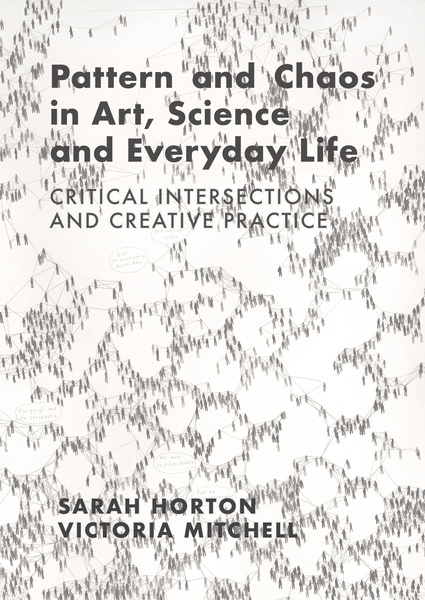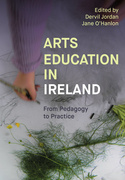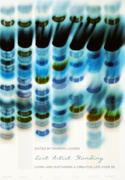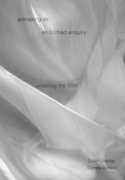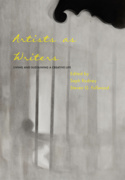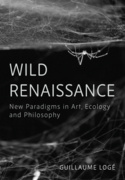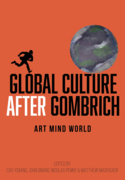Pattern and Chaos in Art, Science and Everyday Life (Book)
Critical Intersections and Creative Practice
This richly illustrated volume explores critical and visual practices through the lens of intersections between pattern and chaos. It challenges disciplinary boundaries, perception and communication, often referencing the in-between territory of art and science through experimentation and visual scrutiny. 179 colour illus.
Edition
This collection explores critical and visual practices through the lens of interactions and intersections between pattern and chaos. The dynamic of the inter-relationship between pattern and chaos is such as to challenge disciplinary boundaries, critical frameworks and modes of understanding, perception and communication, often referencing the in-between territory of art and science through experimentation and visual scrutiny. A territory of 'pattern-chaos' or 'chaos-pattern' begins to unfold.
Drawing upon fields such as visual culture, sociology, physics, neurobiology, linguistics or critical theory, for example, contributors have experimented with pattern and/or chaos-related forms, processes, materials, sounds and language or have reflected on the work of other artists, scientists and scholars. Diagrams, tessellations, dust, knots, mazes, folds, creases, flux, virus, fire and flow are indicative of processes through which pattern and chaos are addressed.
The contributions are organized into clusters of subjects which reflect the interdisciplinary terrain through a robust, yet also experimental, arrangement. These are 'Pattern Dynamics', 'Morph Flux Mutate', 'Decompose Recompose', 'Virus; Social Imaginary' and 'Nothings in Particular'.
Victoria Mitchell is Research Fellow at Norwich University of the Arts. She has published papers on various aspects of art, design and textile culture, pursuing an interdisciplinary theoretical approach which focuses on material, making, metaphor and meaning, and is co-editor of The Material Culture of Basketry (Bloomsbury, 2020), for which she wrote on pattern in the context of braiding and dancing.
Dr Sarah Horton is an artist-researcher whose practice includes sculpture, drawing and painting often resulting in site-specific artwork. Her doctorate ‘Decoration: Disrupting the workplace and challenging the work of art’ indicates an ongoing interest in the way pattern, decoration and ornament is used in fine art and in a wider sense to indicate value and identity.
Acknowledgements
List of Figures
Introduction
Sarah Horton and Victoria Mitchell
PART 1: PATTERN DYNAMICS
Introduction
- The Anxious Spiral
Krzysztof Fijalkowski
- Representing Kinematics and Dynamics by Pattern-Breaking in Nature, Art and Music
- Brian Whalley and J. Harry Whalley
- Drawing Dynamic Patterns: The Protein Maze
Gemma Anderson, Jonathan Phillips and John Dupré
- The Metamorphogram: Pattern as Memory of Experience
Alun Kirby
- Crumpling: An Exploration of Nature
Dewi Brunet and Gwenaël Prost, for the CRIMP Ccollective
- Somewhere Between Weaving and Painting
Geoff Diego Litherland (with Angharad McLaren)
- Knotting Across Species: Creating Order from Chaos
Eleanor Morgan
- Simplifying Complexity: The Visual Language of Neuroscience
Gill Brown
PART 2: MORPH, FLUX, MUTATE
Introduction
- Unrepeating-Repeat
Danica Maier
- Pattern Evolution
Kate Farley
- Geomorphology: Mapping the Land, Above and Below Water
Glyn Brewerton
- Flux
Katy Hammond
- Drawing Fire
David Griffin
- Imago Images
Robert Hillier
- The Chaos of Delight: Spatial and Temporal Interruptions
Lesley Halliwell
PART 3: DECOMPOSE–-RECOMPOSE
Introduction
- Foment
Catherine Yass
- Meniscus
James Quinn
- Digital Dadaism
Chris Brown
- Forty-Four Sounds
Mark Graver
- A Type of Chaos
Pauline Clancy
- Fragile Order
Charlotte Hodes
- Shatter
Zoë Hillyard
- The Moments I am Looking For…
Judith Stewart
- Expanded Visuality: Photography as a Patterning Mechanism for the Animated Form
Katarina Andjelkovic
PART 4: VIRUS
Introduction
- Global Ghost Map
Anne Eggebert
- Embodied and Coded: Drawings as Viral Systems
Daksha Patel
- Viral Experiments
Louise Mackenzie
- Contagious Pattern: The Spread of Appropriated Patterns by Contemporary Artists
Andrew Bracey
PART 5: SOCIAL IMAGINARY
Introduction
- You’ll Never Walk Alone: Aa Song of Community and Struggle 1945–2021
Sarah Lowndes
- Dialectical Reversal in About Two Worlds
David Mabb
- Distance and Disruption: The Organizsed Disorder of the Body in Illness
Catherine Baker
- Unfolding Thinking: Nanotechnology Meets Fine Art Practice
Les Bicknell
- Instead of the Feeling of Home
Townley and Bradby
- Designing for the Real World: The Importance of Chaos
Anthony Hudson
- Order?
Sarah Blair
- You Guys Are So Stochastic
Lucy Ward and Karoline Wiesner
- Clouds in the Machine
Sarah Horton
PART 6 NOTHINGS IN PARTICULAR
Introduction
- The Shape of Dust
Doris Rohr
- Mimesis: Nothings in Particular
William Prosser
- Mottled Geometries: The Lure and Allure of the Pattern in the Carpet
Victoria Mitchell
- Ghost Flower 3
Andrea Stokes
- Dom Sylvester Houédard: Exhibiting Spiritual Architypestractures and Cosmic Dust
Nicola Simpson
Notes on Contributors
Bibliography
Index
'In Pattern and Chaos in Art, Science and Everyday Life, chaos serves as the setting, while the creation, examination, documentation and destruction of patterns constitute the subject of the narrative... Many of these essays break down our sensory and imagined world into fundamental parts for metaphysical scrutiny and transformations between sense and creative interpretation.
The personal and observational nature of...most of the writing in this book, is characteristic of academic writing about the creative process. This type of writing will be familiar to those publishing work in creative disciplines or collaborating with creatives in academia. For them, this book is a survey of works in related fields. Some of the featured techniques could be repeated at a smaller scale as practical exercises or investigations. This style will be less familiar to scientists, but it is a valuable example of research documentation outside the lab and shows how scientific research can be combined with work from other communities.
Regardless of your professional discipline, when you take a step back and consider what these artists are doing, the imaginative power of their work is moving.'


